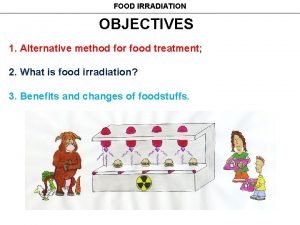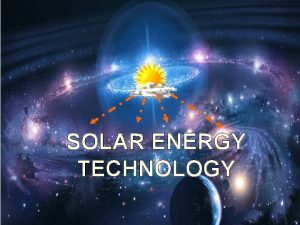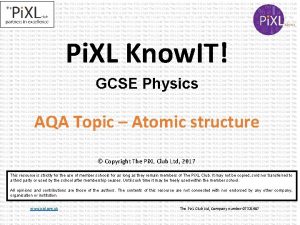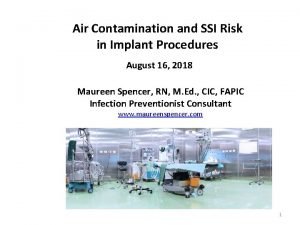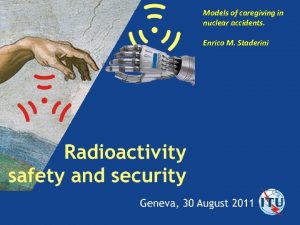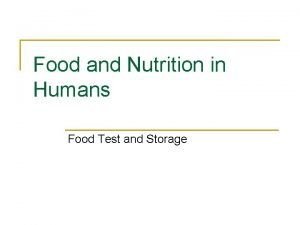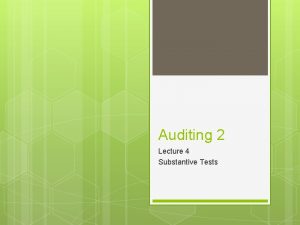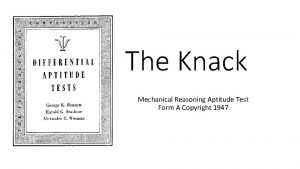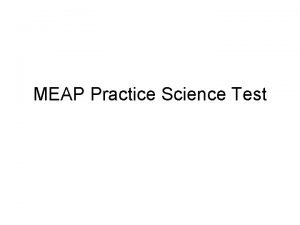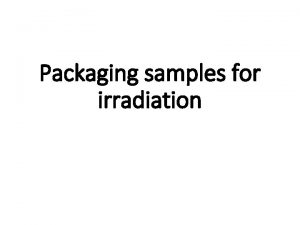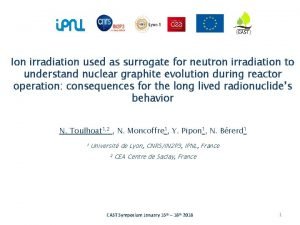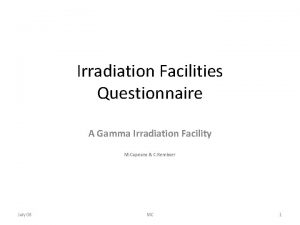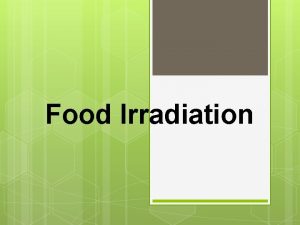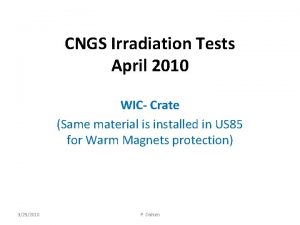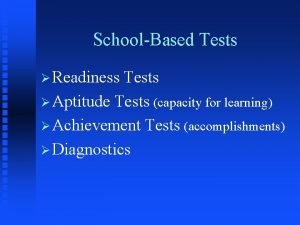PS irradiation tests Yu Guz 05 10 2010









- Slides: 9

PS irradiation tests Yu. Guz 05. 10. 2010 1/8

LIL irradiation (1999) LHCb note 2000 -033. Presentation (Sergey): http: //indico. cern. ch/get. File. py/access? contrib. Id=5&session. Id=2&res. Id=1&material Id=slides&conf. Id=51076 Performed with 500 Me. V electrons, ~5 Mrad at shower maximum. The degradation of fibers and scintillator tiles was measured and used as an input for simulation. The resulting degradation of ECAL light yield and energy resolution calculated as a function of dose. Significant annealing effect was observed in both scintillator and fibers. But: different type of scintillator and fibers, different composition of radiation field (for example, in hadron radiation the damage may be more severe, and the annealing less significant) it was decided to perform new tests. Yu. Guz 05. 10. 2010 2/8

A new test started: irradiation in the LHC tunnel Two Inner type ECAL modules were installed in the LHC tunnel in September 2009. The position is at ~4 m from the interaction point, 15 cm from the beam pipe. The expected dose rate is ~ 10 x of that for the ECAL innermost modules. EDMS notes: https: //edms. cern. ch/file/1014963/1/Irradiation. LHC. pdf; https: //edms. cern. ch/file/1011674/1. 0/LHC-X 8 CAL-EC-0001 -10 -00. pdf ; Presentation (Rustem): http: //indico. cern. ch/get. File. py/access? contrib. Id=31&session. Id=5&res. Id=1&material. Id =slides&conf. Id=67047 A perfect experiment: the dose rate and radiation field composition are very similar to that in LHCb at higher luminosity. The expected dose at the end of 2011 (1 fb-1) corresponds to ~1 year at L=1033 cm-2 s-1. In 2012 the performance of the modules will be studied at the SPS electron beam. Yu. Guz 05. 10. 2010 3/8

Test at the PS IRRAD 3 facility In the meanwhile, a test with hadron beam was proposed: irradiation with 24 Ge. V protons at the PS IRRAD 3 facility. - + The particle field composition, dose rate and longitudinal profile are different from those expected at LHC Studies of same type modules as installed in LHCb. Studies of damage in hadron beam – complementary to the LIL tests Irradiation in November 2010, test results in August 2011 – earlier detection of possible higher damage at hadron irradiation Yu. Guz 05. 10. 2010 4/8

Test at the PS IRRAD 3 facility As we are short in Inner type modules, we could use Outer ones. This is more severe test: in Outer modules the fiber density is lower than in Inner ones. It is planned to uniformly irradiate (at least) the 8 x 8 cm 2 central area of the module. As the PS proton beam is rather narrow (typically 1 -2 cm diameter), the irradiation will be performed step by step, making use of (x, y)-movable irradiation table. Yu. Guz 05. 10. 2010 5/8

Test at the PS IRRAD 3 facility The dose profiles and induced activity level were calculated using FLUKA (V. Talanov). In order to obtain ~ 2 Mrad when irradiating a 8 x 8 cm 2 area, we need ~5∙ 1014 protons: ~ 3 days of irradiation. Longitudinal dose profile, 24 Ge. V protons p 24 Ge. V For comparison: longitudinal dose profile, LHCb, innermost cell (from TDR) Yu. Guz 05. 10. 2010 6/8

Test at the PS IRRAD 3 facility – 2 module option There is an option to irradiate two modules. For the moment, we are thinking of irradiating one module (#1) with ~5∙ 1014 and another one (#2) with ~2∙ 1014 protons. The #1 will then be tested at SPS. The #2 will be used only to measure the longitudinal dose profile: its fibers will be removed, and several film dosimeters will be installed inside the lead-plastic stack. Yu. Guz 05. 10. 2010 7/8

Test at the PS IRRAD 3 facility – status Two candidates for module #1 passed “before-irradiation” tests at the SPS H 4 beam 17/07/2010 (thanks to COMPASS colleagues and Pavel) Preliminary schedule is available. The irradiation is scheduled for 1518/11/2010. After cooldown (07/03/2011) the module(s) will be moved to the radiation storage area of bld 157 and stay there till SPS beam tests (August 2011). The proposal is awaiting approval by RP (this week? ). Some mechanics (plastic support for module(s) ) have to be produced (E. Chernov). Yu. Guz 05. 10. 2010 8/8

AOB PMT stability at high current in under study (Pavel). A ECAL PMT is kept at 30 mk. A with permanent LED light since 04/08/2010 (~160 Coulomb up to now). The (relative) gain is measured periodically (~once a week) with LED pulses. The amplitude is set using PIN diode; on top of this, effective number of photoelectrons , i. e. (mean/rms)^2 is measured every time and found stable within ± 5%. The test will be continued till Christmas (400 C) at least relative gain By now, the gain reduction by factor of ~2 observed. Q, Coulomb Yu. Guz 05. 10. 2010 9/8
